Evolving technologies have been bringing ease to people’s lives. It has been persistently contributing good impact by keeping the livelihood and industries upright. Innovation in conventional ways is mandatory to stay in line in a dynamic world. In the old days, people used to do work manually, which required more effort and had less efficiency. Perhaps, work done by old means possesses lesser precision.
Over time, people’s approach to bringing convenience and precision have been increasing. In the modern era, with modern interventions, as we have diverse types of machinery subsequently there is a wide range of tools required to proceed with intended work done and operation of machinery. These tools play a key role in various industries more specifically in the automobile industry.
Consumer’s demand for well organized, efficient, high quality, and reliable products can only be achieved by utilizing quality tools that will shape the required outcome.
There are many tools used for cutting metal and having either single point and multi-point. Single-point tools are mainly having a single tip and used for shaping, planing, and turning metal workpiece. However, multi-point cutting tools comprising various kinds of tips used for milling and drilling. To obtain the desire shape and posture of the workpiece these tools play a chief role in molding require demand.
These cutting tools are made of different materials and having different properties. The material of the cutting tool relies on the fact that the hardness of the workpiece and the required accuracy. Among different materials of tools for automobiles, Tungsten Carbide Cutting Tools are durable and resilient. Carbide metal possesses the highest temperature transmission with a lesser rate of getting affected while functioning.
These tools are used for cutting steel, aluminum, iron, and titanium. These tools hold many advantages and have different types regarding various works. Types of cutting tools are Carbide Drills Bits, Carbide End Mills, and Carbide rotary burr.
Why tungsten Carbide Tools?
Among different metallic substances, Tungsten Carbide is the dense and hardest metallic substance. It retains high wear resistance, high thermal conductivity, and high young’s modulus hence, good performance. While shaping, turning, milling, and drilling, cutting tools made of tungsten carbide will showcase lesser deterioration as tungsten has the highest wear resistance.
Moreover, Carbide tools owned lesser detention of temperature during cutting thus it causes fewer degradation of tools. Furthermore, high modulus displays tungsten’s ability to resist the abrasion of cutting tools. Subsequently, products deformed by tungsten carbide is the best option for costumers and manufacturer because of their high quality and ability of accurately tuned.
Following are the detail of types of Carbide Cutting tools and their advantages which make them dominate over other material’s tools.
Carbide End Mills
Carbide end mill (CEM) tools have a wide range in diameter. Carbide tools made of tungsten have better rigidity, lesser weight, and high strength to weight ratio. Moreover, their speed of application is high. It has faster running and working abilities than high-speed steel. CEM tools have flexibility thus it can move in all directions which make it dominate over standard dills.
CEM utilization enhances the accuracy of cutting objects thus it helps to grasp the exact geometry of the workpiece. CEM tools are present for general and heavy-duty uses with various set of hardness to cope with different kinds of metals. Furthermore, CEM tools have grey, light grey, bronze, and blue-grey coating. Among other convenience, CEM can easily fit in lathe machine holder thus it provides efficient performance subsequently it creates a diverse variety of grooves, slots, and pockets in the object. Benefits obtained by CEM reduce the cost and time for customers and manufacturers.
There are several benefits of utilizing CEM. Various advantages are as following;
- Maintain the accuracy in geometry
- Operational Flexibility
- Higher rate of metal removal
- Easily in achieving the surface finishing
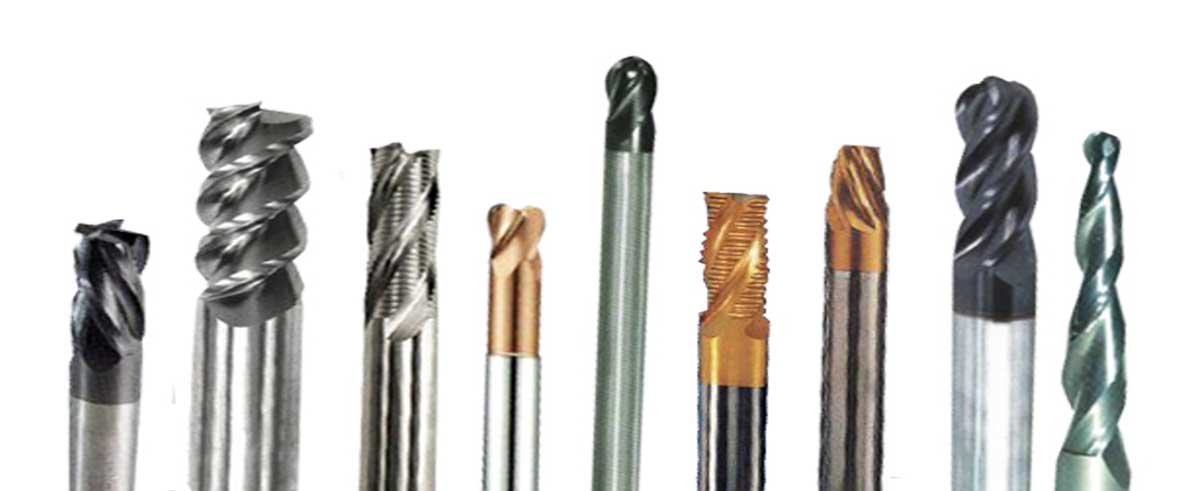
Figure 1: Carbide End Mills
Carbide Drill Bits
Carbide drill bits (CDB) are made of tungsten thus possess a high hardness value which enables them to pierce in hardest objects. CDB has sharp cutting edges hence requires lesser time and less effort for drilling.
As tungsten comprising the property of heat transitivity and greater modulus thus catering extensive deterioration relative to high-speed steel (HSS) is greater while drilling. Carbide drills run faster than HSS because of their ability to absorb heat moreover have less wearing and tearing. CDB maintains its sharpness longer than HSS which reduces the cost however increases trustworthiness. CDB is usable in all directions hence flexible to use.
There are mainly three types of carbide drills and these types are distinguished on basis of depth of hole and precision. Tipped carbide drills are non-coolant drills suitable for shallow holes and lesser in cost whereas solid carbide drills are non-coolant but suitable for relatively deeper holes than tipped drills.
Besides, coolant-fed drills have a mechanism of circulation of fluid that reduces the generated heat while drilling thus drill works more efficiently and is used for drilling the deep holes. However, these drills are operated in special machines. The variety of CDB has acquired attention in recent practices due to comprising many Privileges.
Following are the chief advantages of CDB;
- Lesser wear and Tear
- Operational Flexibility
- The ability to drill in hard metals
- More efficient and longer life than HSS
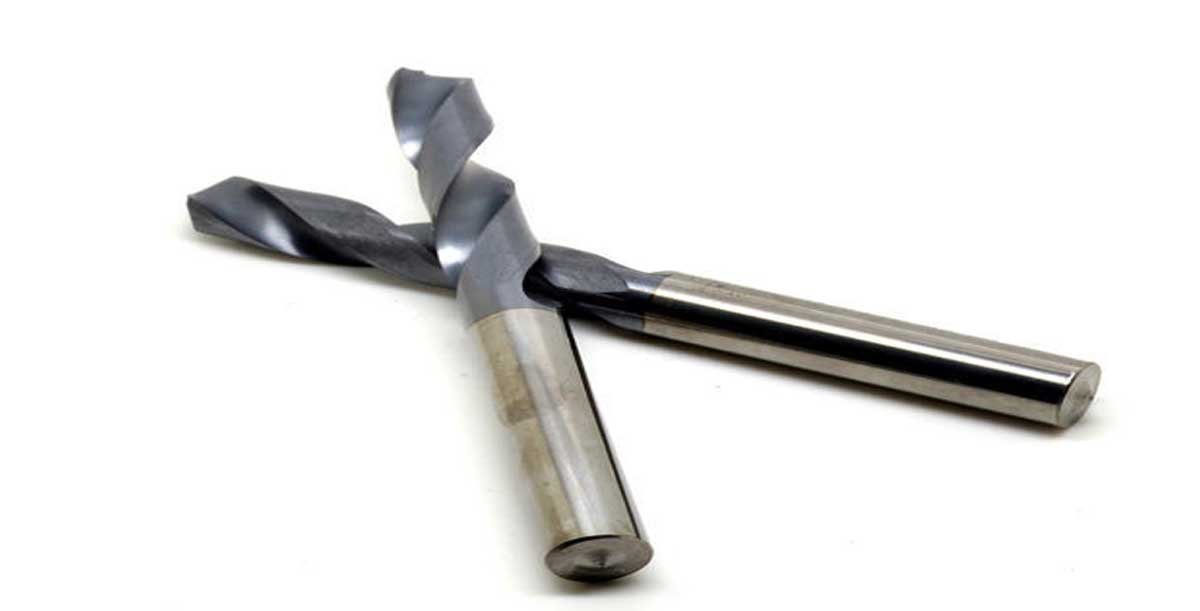
Figure 2: Carbide Drill Bits
Carbide rotary burr
Carbide rotary burr (CRB) is a kind of cutting tool mainly used for burring and trimming the unnecessary parts of the workpiece. It helps in shaping, grinding, cutting, and removal of sharp corners of metallic and non-metallic workpieces.
It makes lesser sound and vibration while operating thus help to form a workable environment. CRB forge by tungsten material can be used for de-burring the verity of metallic substances for example cast iron, brass, aluminum, titanium, gold, and silver, etc. These burrs are available in different shapes and have a different styles of grooves at the head.
CRB is mainly divided into two types depending on the formation of the groove at the tip of the tool. Single cut carbide burr is having right-hand grooves and is used for metallic materials.
Double cut carbide burr used for non-metallic, ferrous, and non-ferrous metals. Moreover, it has rapid action of performing the intended purpose. Double cut burrs provide a smoother finish than single cut. Double cut burrs are similar to diamond burr furthermore It has right-handed and left-handed grooves on the tip.
Following are the key advantages of CDB;
- Smooth finishing
- Longer life
- Usable for hard metals
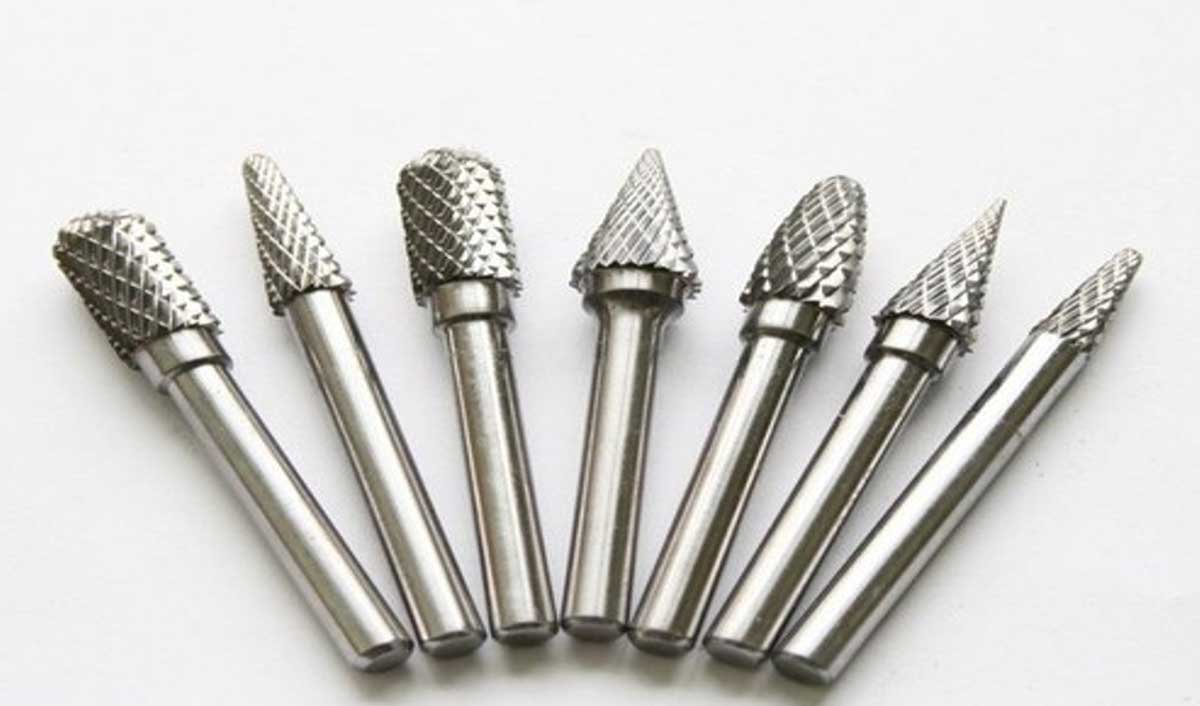
Figure 3: Carbide Rotatory Burrs

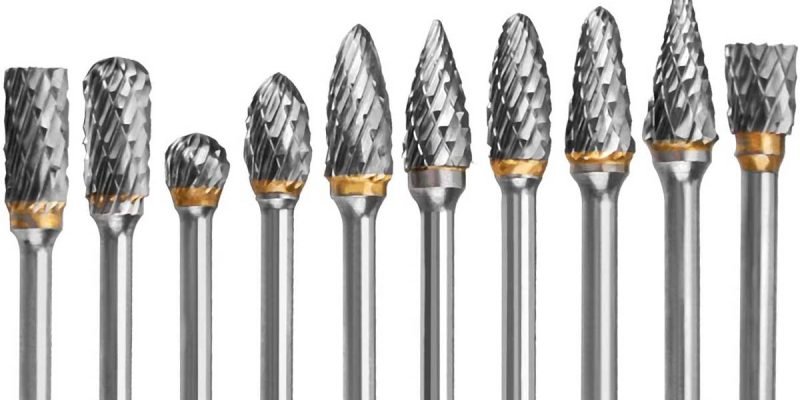
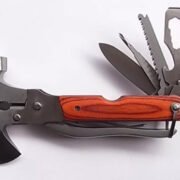

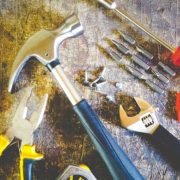











Comments